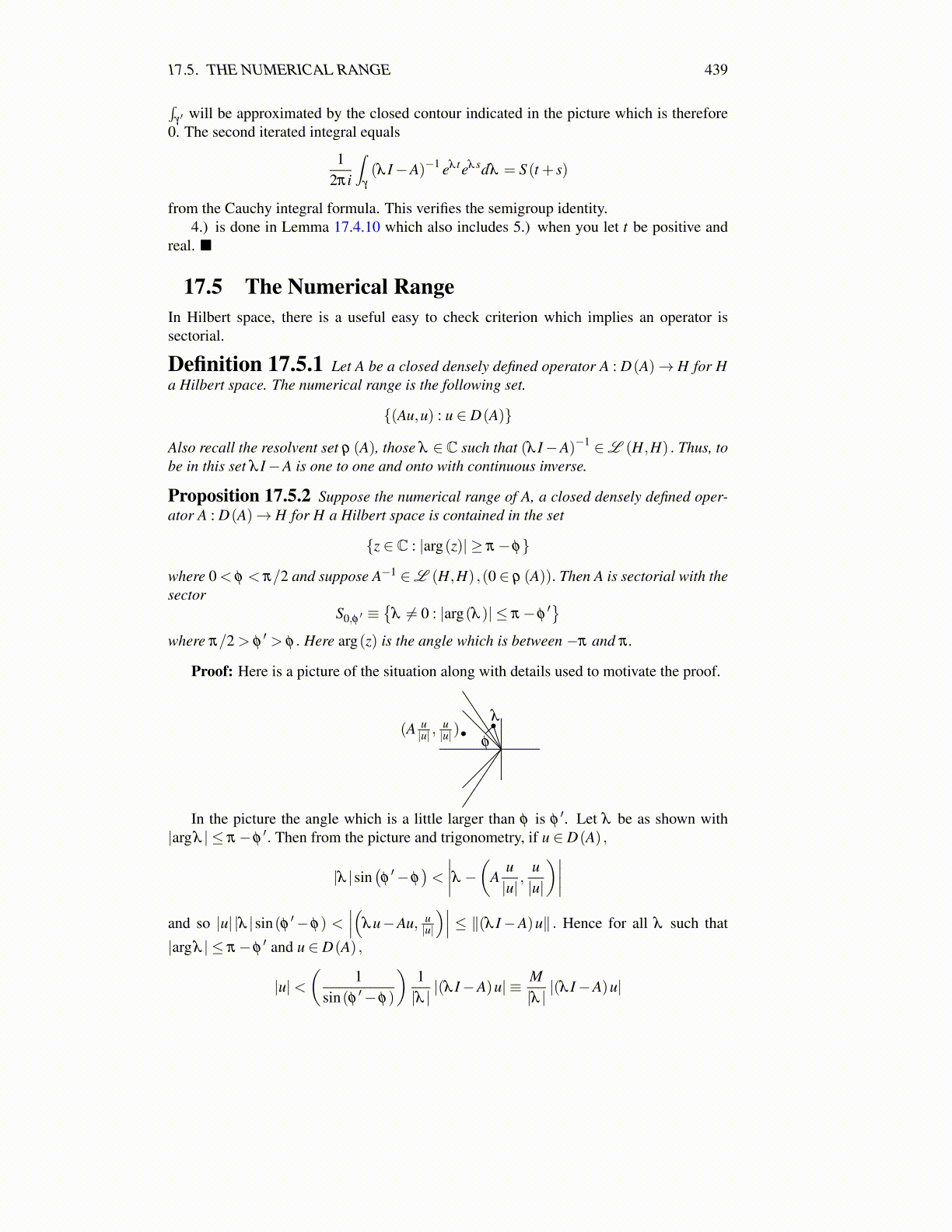
17.5. THE NUMERICAL RANGE 439
∫γ ′ will be approximated by the closed contour indicated in the picture which is therefore
0. The second iterated integral equals
12πi
∫γ
(λ I−A)−1 eλ teλ sdλ = S (t + s)
from the Cauchy integral formula. This verifies the semigroup identity.4.) is done in Lemma 17.4.10 which also includes 5.) when you let t be positive and
real. ■
17.5 The Numerical RangeIn Hilbert space, there is a useful easy to check criterion which implies an operator issectorial.
Definition 17.5.1 Let A be a closed densely defined operator A : D(A)→ H for Ha Hilbert space. The numerical range is the following set.
{(Au,u) : u ∈ D(A)}
Also recall the resolvent set ρ (A), those λ ∈C such that (λ I−A)−1 ∈L (H,H) . Thus, tobe in this set λ I−A is one to one and onto with continuous inverse.
Proposition 17.5.2 Suppose the numerical range of A, a closed densely defined oper-ator A : D(A)→ H for H a Hilbert space is contained in the set
{z ∈ C : |arg(z)| ≥ π−φ}
where 0 < φ < π/2 and suppose A−1 ∈L (H,H) ,(0 ∈ ρ (A)). Then A is sectorial with thesector
S0,φ ′ ≡{
λ ̸= 0 : |arg(λ )| ≤ π−φ′}
where π/2 > φ′ > φ . Here arg(z) is the angle which is between −π and π .
Proof: Here is a picture of the situation along with details used to motivate the proof.
φ(A u|u| ,
u|u| )
λ
In the picture the angle which is a little larger than φ is φ′. Let λ be as shown with
|argλ | ≤ π−φ′. Then from the picture and trigonometry, if u ∈ D(A) ,
|λ |sin(φ′−φ
)<
∣∣∣∣λ −(Au|u|
,u|u|
)∣∣∣∣and so |u| |λ |sin(φ ′−φ) <
∣∣∣(λu−Au, u|u|
)∣∣∣ ≤ ∥(λ I−A)u∥ . Hence for all λ such that
|argλ | ≤ π−φ′ and u ∈ D(A) ,
|u|<(
1sin(φ ′−φ)
)1|λ ||(λ I−A)u| ≡ M
|λ ||(λ I−A)u|